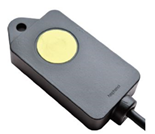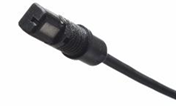When indoors, the health and comfort of those who occupy that “confined space” are affected, often unnoticed, by the air quality of that space. While the sources of poor indoor air quality can have both immediate and delayed health effects with varying levels of severity, many instances of indoor air pollution can be easily resolved - and/or prevented altogether - with proper ventilation.
While the list of indoor air pollutants and sources is quite lengthy, the more commonly occurring causes of poor indoor air quality include:
- Excessive indoor humidity levels
- High levels of Carbon Dioxide (CO2), Carbon Monoxide (CO), and Nitrogen Oxides (NOX)
- In-air pollutants, such as dust, pollen, chemicals, microbes, and pet dander
Health effects can occur when someone experiences short-term or long-term exposure to environments with poor air quality. Effects such as eye irritation, irritation of the throat and nose, dizziness, headaches, and fatigue may occur soon after a single exposure or repeated exposures to a pollutant.
Other health effects, such as respiratory disease, heart disease, or cancer may not arise until years after exposure or following long or repeated periods of exposure.
Once pollutants are inside buildings, there are two options:
- Bring in fresh air from outside
- Filter the pollutants from the air
The safest indoor space is one that has adequate outside air constantly introduced in order to replace the stale air inside. If not enough outside air is used indoors, pollutants can accumulate to levels that can result in health and comfort issues.
Additionally, most of the SARS-CoV-2 transmission takes place indoors, with most of the transmission occurring from the inhalation of airborne particles containing the coronavirus.
Every time you exhale, CO2 is released into the air. Since coronavirus is most commonly spread by coughing, breathing, or talking, CO2 levels can be used to monitor whether the room is filled with potentially infectious exhalations or judge indoor air quality.
The CO2 level lets you establish if enough fresh outside air is being introduced.
In addition to monitoring the level of pollutants in the air, maintaining proper indoor humidity levels is also of importance. ASHRAE recommends that indoor humidity levels are kept between 40-60%. This is because studies have shown that RH levels <40% are a significant driver of patient infections.
The Center for Disease Control and Prevention offers the following recommendations regarding the HVAC system during the present pandemic in order to help minimize the spread and to maintain quality indoor air:
- Increase outdoor air ventilation (it should be noted that caution should be taken in highly polluted areas) when there is a lower population in the building to increase the effective dilution ventilation per person.
In outside air, CO2 levels are usually 400 ppm. The CO2 level of a well ventilated room should be around ≤800 ppm. A CO2 level above 800 ppm indicates that additional ventilation may be required.
- Disable the demand-controlled ventilation (DCV) and further open minimum outdoor air dampers as high as 100% while monitoring thermal comfort and humidity conditions within the spaces being served.
- Improve the central air filtration media to the MERV-13 level or the highest level that is compatible with the filter rack. Seal the edges and/or gasket of the filter racks to limit bypass.
As the filters will capture more particulate, it is important to monitor the pressure drop across the filters, ensuring that they are changed as often as required in order to limit filter bypass.
- Keep systems running longer, up to 24/7 if possible, therefore allowing for continuous outside air dilution and particulate filtering. Consider supplementing with portable room air cleaners that have HEPA filters.
- Conducting a room-by-room audit is suggested to establish spaces that are of particular concern based on occupant complaints of stuffiness or odors, known deficiencies in HVAC systems, and/or rooms with minimal connection to other building systems.
These spaces should be the initial targets for increasing ventilation, either through the existing air distribution system or through the provision of a new system, like a room ventilator.
Amphenol Advanced Sensors offers an entire line of Indoor Air Quality sensors to help monitor and control the level of air quality within your environment:

T6613. Image Credit: Amphenol Advanced Sensors

T6615. Image Credit: Amphenol Advanced Sensors
T6613 OEM CO2 Sensor Single-Channel Module: Single channel module designed to meet the cost, volume and delivery expectations of OEMs.
T6615 OEM CO2 Sensor Dual-Channel Module: Dual channel module designed to meet the delivery volume and cost expectations of OEMs.

T6713. Image Credit: Amphenol Advanced Sensors
T6713 OEM CO2 Sensor Single-Channel Module: Ideal for applications where CO2 levels need to be measured and controlled for both IAQ and energy savings.

T3000. Image Credit: Amphenol Advanced Sensors

T3022. Image Credit: Amphenol Advanced Sensors
T3000-Series Harsh-Duty Environment CO2 Sensors: This is a non-dispersive infrared (NDIR) gas sensor that has been designed to measure CO2 in harsh environments. It has been tested so it can operate in environments with ammonium, salt mist, ethylene, SO2 and O2 present.

Image Credit: Amphenol Advanced Sensors
MiCS-VZ-89TE Integrated Sensor Board for IAQ Monitoring: State-of-the-art MOS sensor technology and intelligent detection algorithms have been combined to monitor tVOC and CO2 equivalent variations in confined spaces, for example, meeting rooms or vehicle cabins.

Image Credit: Amphenol Advanced Sensors
ChipCap 2 Relative Humidity Sensor: ChipCap 2 is a capacitive polymer sensor chip and a CMOS integrated circuit with EEPROM integrated into one embedded system in a reflow solderable SMD package.
Individually tested and calibrated, ChipCap 2 performs at ±2% from 20% to 80% RH (±3% over the entire humidity range) and is simple and ready to use without the need for further calibration or temperature compensation.
ChipCap 2 delivers linear output signals in I2C interface, PDM convertible to analog signal, with alarm function for preset control at min/max humidity, based on the requirements of the customer.

T9602. Image Credit: Amphenol Advanced Sensors
T9602 Harsh Environment Humidity and Temperature: The T9602 is based on a capacitive polymer sensor chip and ASIC that are integrated into an easy-mount OEM package. It is simple and ready to use without the need for temperature compensation or further calibration.
The T9602 provides linearized output signals in I2C interface or PDM convertible to analog signal dependent on customer requirements.

Image Credit: Amphenol Advanced Sensors
NovaSensor FMA-Series Air Filter Monitor: The FMA 500 series air filter sensor is designed for the improvement of air filtration system performance through the use of high accuracy NPA technology.
The plastic housing with 1/8" -27 NPT female threads is designed for easy installation and maintenance free applications.
The sensor has a low response time, less than or equal to 2 msec, and is temperature-compensated, with an operating temperature range of -40 C to +125 C. It has been designed with a hydrophobic reference port and a sealed connection system.

Image Credit: Amphenol Advanced Sensors
SM-UART-04L Particulate Dust Sensor: SM-UART-04L is a PM2.5 laser-based sensor that can detect dust particle concentration in the air through the use of an optical sensing method.
A laser light emitting diode (laser LED) and a photo sensor are optically arranged inside the device. The photo sensor detects the reflected laser LED light by dust particles in the air. The pulse pattern of the signal output enables the dust sensor to detect small particles from large house dust.

Image Credit: Amphenol Advanced Sensors
T8000-Series Single-Channel, Dual-Channel, or Single-Channel with Pitot for Duct-Mount CO2 Transmitters: This is an affordable gas-sensing solution for OEMs, with a reliable sensor design based on 20+ years of engineering and manufacturing expertise.
The flexible CO2 sensor platform is designed to interact with other microprocessor devices.

Image Credit: Amphenol Advanced Sensors
T7100 Handheld Indoor Air Quality Monitor: This device calculates the volume of outside air/person in CFM and monitors CO2 and temperature, as well as ventilation rates.
Sources and Further Reading

This information has been sourced, reviewed and adapted from materials provided by Amphenol Advanced Sensors.
For more information on this source, please visit Amphenol Advanced Sensors.